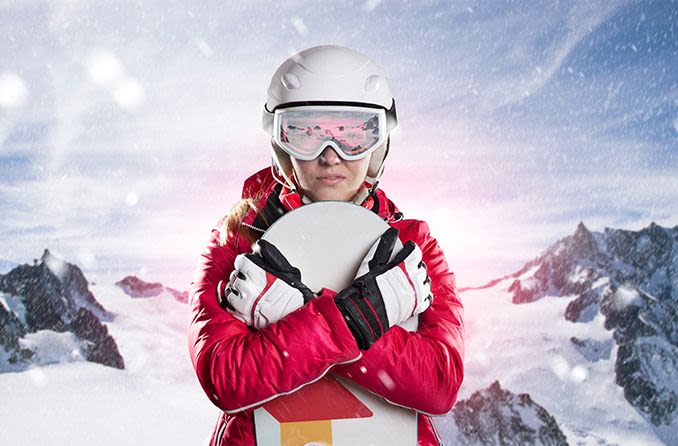Are photochromic ski goggles right for you?

Whether you’re planning to carve your way down the slopes or schuss along cross-country paths, photochromic ski goggles are just one of several technologies you should consider packing for your ski weekend.
Photochromic lenses provide a great defense against harsh outdoor elements, including harmful ultraviolet rays from the sun. They also provide you with clearer vision, which can be impacted by the sun’s reflection off the snow.
Plus, wearing ski goggles with photochromic lenses means you only need to use one pair. The lenses easily transition from clear to dark depending on the amount of light present at any moment.
WONDERING WHETHER PHOTOCHROMIC SKI GOGGLES ARE RIGHT FOR YOU? Talk to an optician or visit an optical shop near you.
How do photochromic ski goggles work?
Ski goggles with photochromic lenses react to the shift from indoor to outdoor light. The brighter and more intense the sun, the darker your goggles will become. On the flip side, your lenses will lighten when you return indoors, conditions are overcast or you’re plowing through snow.
Photochromic lenses darken through a chemical process. The lenses are embedded with millions of molecules, including silver chloride or silver halide. These are transparent until your goggles are exposed to the sunlight. When that happens, the molecules change shape, and your lenses darken. But it only occurs when the lenses are exposed to UV rays, so your goggles won’t darken under the fluorescent lights of your ski lodge’s cafeteria.
But, the colder conditions can cause your photochromic lenses to get very dark. This can be beneficial while on the slopes to help shield your eyes from the sun’s rays magnifying as the reflect off the snow. However, it also can mean that it will take a bit longer for the photochromic lenses to go from dark to transparent once you’re indoors.
Still, you can wear the same goggles while you ski from morning to night, as they also provide 100% protection against harmful UV rays from the sun, as well as eye conditions such as photokeratitis, or snow blindness, and dry eye syndrome.
What VLT should I get for skiing?
When selecting goggles for skiing, you’ll typically encounter a variety of visible light transmission (VLT) percentages for lenses, which are also available for photochromic lenses. The lower the VLT percentage, the darker the tint of your lenses. VLTs can range widely from 9% up to the 95%. If it’s a bright, sunny day, you will want to wear something in the 9% to 13% range. For low light, select 70% or higher for better color and depth perception.
Colored tints also play a role in VLT percentages. On the higher VLT end are yellow, gold, or amber, which are great for foggy days and for helping you see bumps in the snow in lower light. On the lower VLT end are deeper tints such as copper, dark brown, dark gray and dark green. These are ideal for sunnier days when the light reflects off the snow at a higher intensity.
However, photochromic lenses tend to have fewer VLT color and tint variations as lenses made specifically in one tint or color.
READ NEXT: Best ski goggles
Page published on Saturday, April 18, 2020




